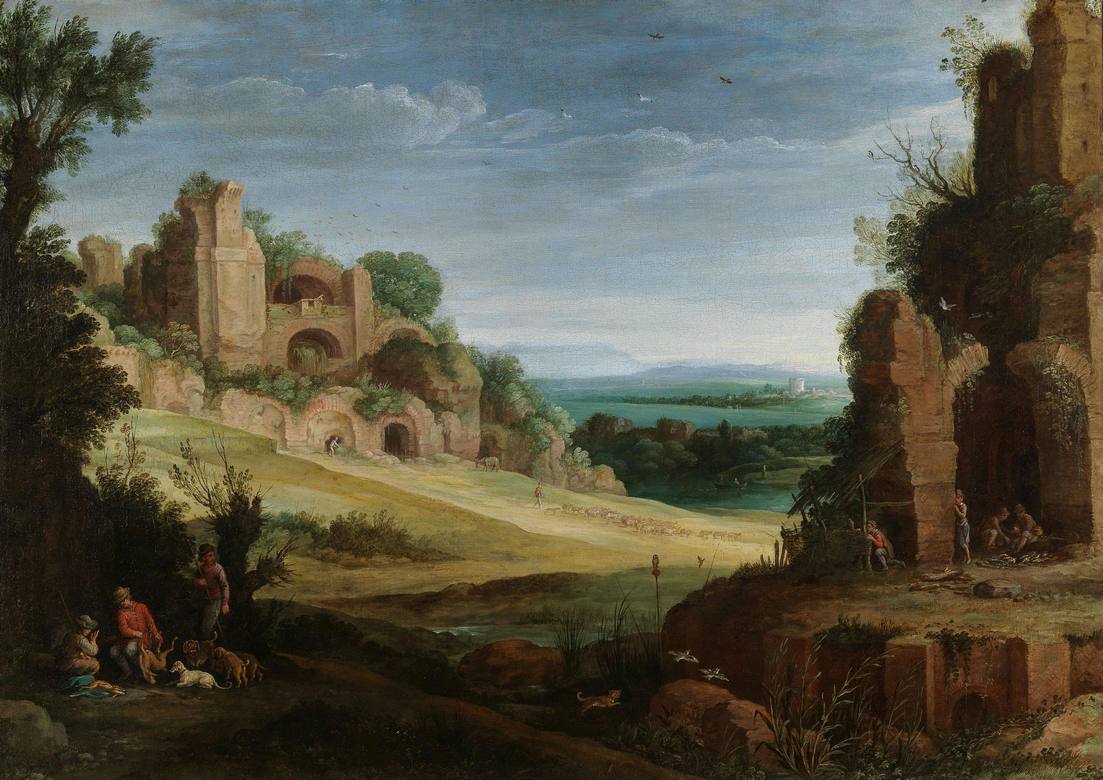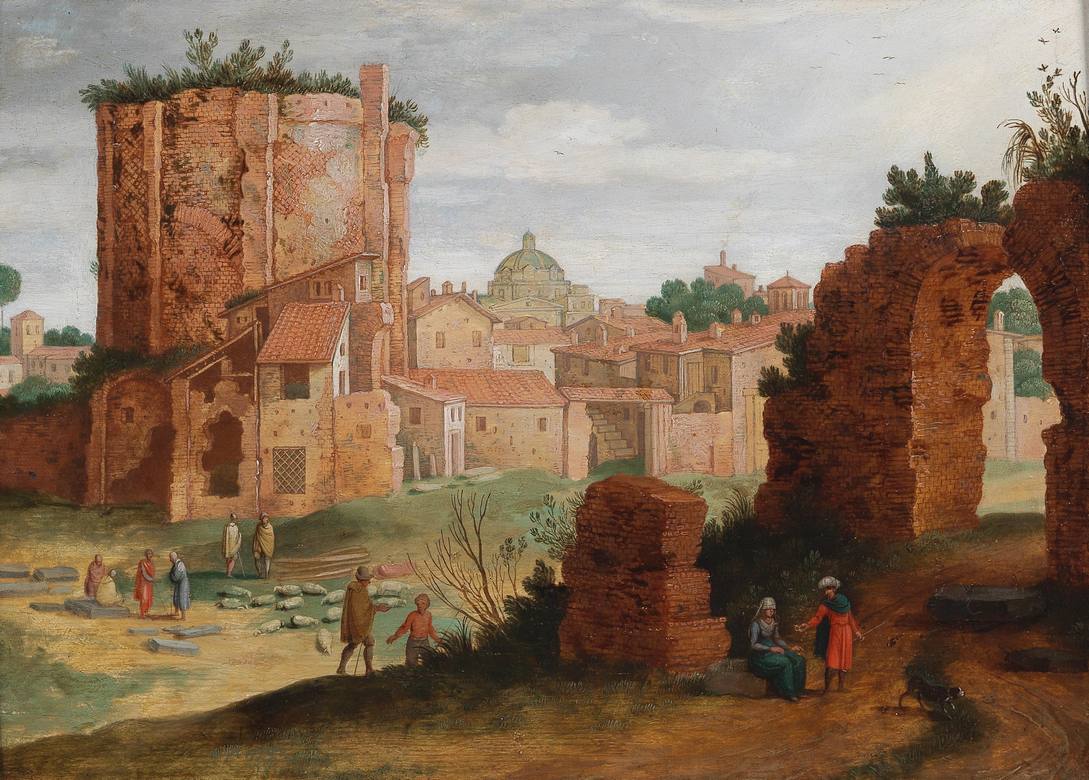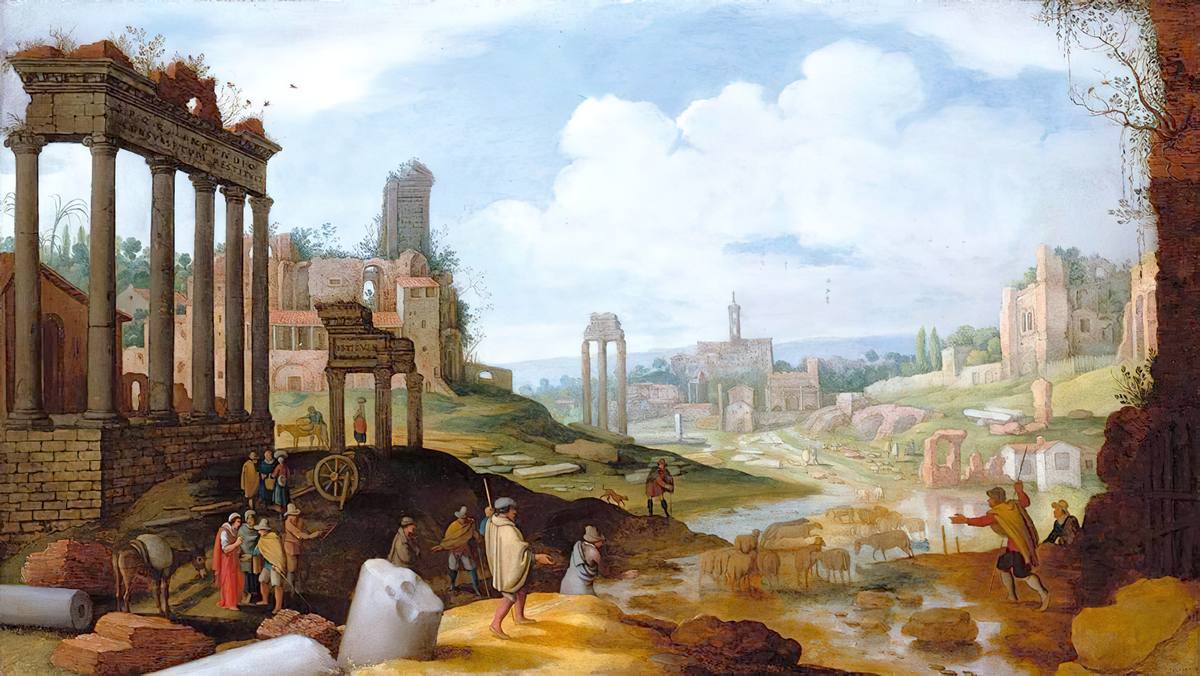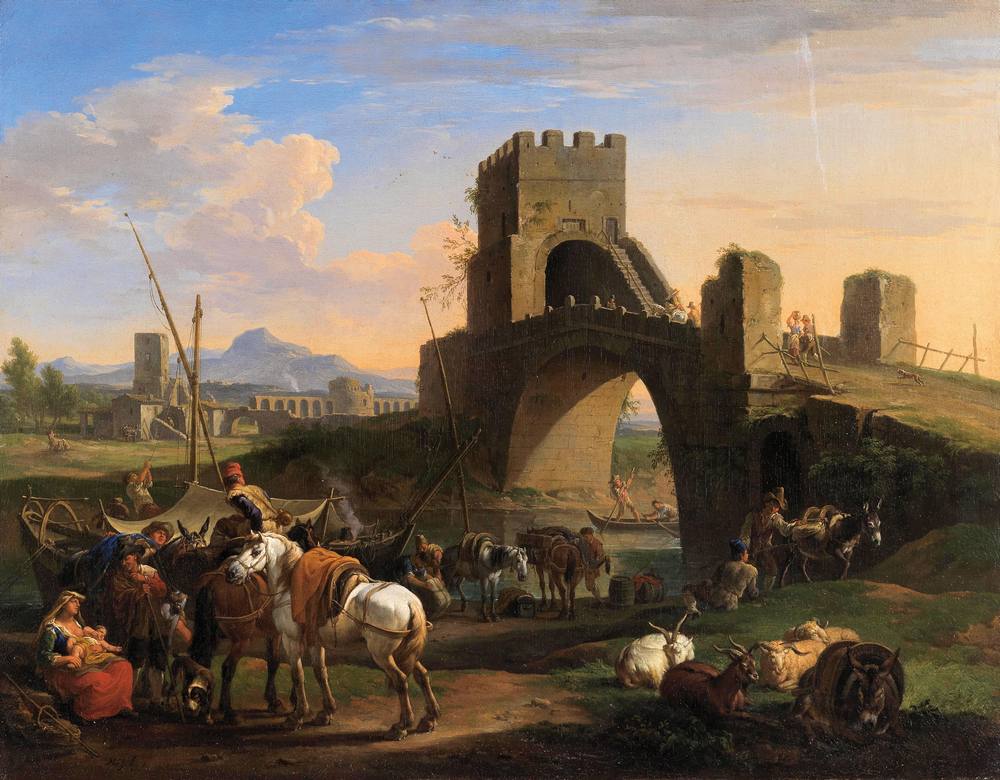
Going back in time
Dutch View Painters in Rome
in the XVI and XVII century
The magic of Rome seduced (and still does) many artists to visit and take advantage of its beautiful sceneries, along with the church decoration work that came from the Vatican, since the Renaissance.
As the View Painter movement that was developing in Holland in the XVI century, was soon shared with the Roman artistic environment using the classic religious themes, but adding an "environmental" and "monumental" twist to it, even before the Grand Tour was bringing potential buyers to the Italian peninsula.
Paul Bril (1554-1626)
Paul (or Paulus) Bril was a Flemish painter and print-maker principally known for his landscapes. He's said to have moved to Rome to join his brother Matthijs in 1582, took over his works when he died the next year, and established his own image as a skilled professional.
He worked for some time on several frescoes in the Vatican Palace and Santa Cecilia in Trastevere and in 1621 he became director of the Accademia di San Luca, the first non-Italian to hold this position.
He was held in high esteem by his fellow artists in Rome, and created a good market for his paintings with his patrons.
He spent all his life until his death in 1626 in Rome, after a very favorable and interesting life of experiences as a painter.
Willem van Nieulandt II (or Nieuwelandt) (1584-1635)
Willem van Nieulandt II came from a family of painters (his father and his uncle), so that was his road in life was already prepared.
He was a Dutch Golden Age painter, engraver, poet and playwright from Antwerp, better known as a playwright than a painter.
In 1601 he travelled to Rome, where he became a student of Paulus Bril and specialized in painting artistic ruins of monuments, arches, and temples, many of which he then engraved himself.
When he got married in 1606 he returned to Holland dedicating the rest of his life to poetry and theater.
Lievin Cruyl (1634 - before 1720)
Lievin Cruyl was a Flemish priest, also known as Lieven Cruyl, Levin Cruijl, Lievin Cruijl, Levin Cruyl, Livinus Cruylius, Cruylius Livinus, and a draftman and etcher of landscapes, seascapes, and architectural views.
The drawings and etchings he made during his extended stays in Italy and Paris contributed to the development of the topographical views known as "veduta".
He travelled to Rome where he resided from 1664 to 1675, and was in Venice in 1676.
Jacob de Heusch (1656-1701)
Jacob de Heusch was a Dutch painter, he was Willem de Heusch's nephew and was signing like him at the beginning of his career.
He learned drawing from his uncle, travelled to Rome in 1675, where he started painting the "Città Eterna", and made connection with patrons that would sell his paintings in Italy once that he got back to Holland, which happened after a few years of Roman sojourn.
He continued painting after he returned to Utrecht, didn't do much painting, anyway, and most of his work was sent to Italy.
![Paul Bril: [1600] - View of the Roman Forum - Oil on copper - Gemäldegalerie Alte Meister](../images_db/Paul-Bril-1600--x064-View-of-the-Forum-Romanum-with-the-Columns-of-the-Castor-and-Pollux-Temples-and-the-Hadrian-Basilica.jpg)


![Paul Bril: [early 1620s] - View of Bracciano - Oil on canvas - Art Gallery of South Australia](../images_db/Paul-Bril-1620s-early--x063-View_of_Bracciano_goog_01.jpg)

![Willem van Nieulandt II: [1615s] - Italian Landscape - Oil on panel - National Museum in Gdañsk](../images_db/Willem-van-Nieulandt-II-1615s--x068-Italian-landscape-gp.jpg)

![Lievin Cruyl: [1666] - Piazza Navona from 'Prospectus Locurum Urbis Romae Insignium' - Etching - Universiteitsbibliotheek, UGent](../images_db/Lievin-Cruyl-1666--x075-Prospectus-Fori-Agonalis.jpg)
![Lievin Cruyl: [1664] - Eighteen Views of Rome: The Piazza Colonna - Drawing - Pen and brown ink and brush and gray and blue wash over stylus and graphite - framing lines in brown ink - Cleveland Museum of Art](../images_db/Lievin-Cruyl-1664--x078-Piazza-Colonna--Cleveland-Museum-of-Art-1943.258.jpg)
![Lievin Cruyl: [ca. 1667] - The Pantheon, Rome - Drawing - Pen and brown ink with gray wash over black and red chalks - Nelson-Atkins Museum of Art, Kansas City, KS](../images_db/Lievin-Cruyl-1667ca--x076-The-Pantheon-Rome-gp.jpg)

![Jacob de Heusch: [1696] - River View with the Ponte Rotto - Oil on canvas - Herzog Anton Ulrich-Museum, Braunschweig](../images_db/Jacob-de-Heusch-1696--x071-River-View-with-the--Ponte-Rotto-gp1.jpg)
